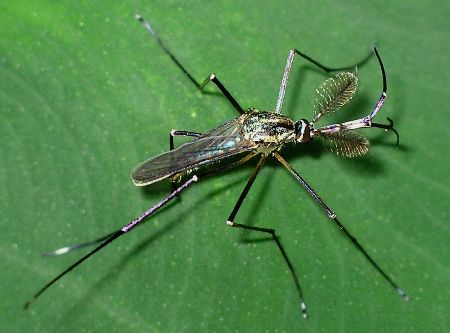by Valerie
March, 2006Elephant Mosquito Bringing exception to the general rule that mosquitoes are bothersome to humans and other vertebrates, the elephant mosquito (Toxorhynchites rutilus) is instead a beneficial insect. Considering that this is our largest mosquito here in Texas, it is quite a relief to know that adults only eat nectar, with no desire for blood. As if that were not good enough, the larvae are voracious predators of other mosquitoes. Elephant mosquitoes are not particularly common, but are easily recognized by their metallic black sheen, large size, and curved proboscis. The males, as pictured above, have very feathery antennae and long upwards curved palps. These insects are usually seen resting on vegetation, as they are not strong fliers. Eggs are laid in containers, tree holes, or bromeliads, and the resulting larvae, being much larger than other mosquitoes, then eat every other insect in their vicinity. After they finish off the other species, they turn on each other, which, combined with the fact that they eat themselves out of prey, results in there being relatively few adults of their own kind in any given area. |